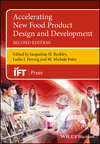APPLICATIONS OF DISCRIMINANT AND LOGISTIC REGRESSION ANALYSIS FOR CONSUMER ACCEPTANCE AND CONSUMER-ORIENTED PRODUCT OPTIMIZATION STUDY
Summary
In this chapter, the authors demonstrate, using two case studies, how predictive discriminant analysis (PDA), descriptive discriminant analysis (DDA), and logistic regression analysis (LRA), in conjunction with other related statistical methods, can be applied for consumer acceptance and consumer-oriented product optimization study, without a burden of having to deal with fuzzy mathematical equations. Restricted regression model was used to predict acceptability of consumer sensory attributes. PDA and LRA were used to identify sensory attributes critical to acceptance and purchase intent; the mixture response surface (MRS) of these identified critical sensory attributes was plotted. Superimposition of optimal MRS areas was used to attain the optimal formulation range. The first study demonstrates feasibility of completely substituting wheat flour with Thai jasmine rice flour for production of butter cake products that are acceptable to U.S. consumers. The second study aims to develop a butter cake product prepared mainly with rice flour and to determine its optimal formulation range.



